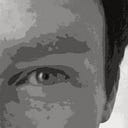Dead of Night
So, how do you feel about England?
That may depend on what you consider to be England — for instance, the English football players taking the knee together to embody a shared modern multicultural community that values persons of colour, or the English football watchers abusing them for their [checks notes] Marxism. We outsiders reflexively think it’s the latter; we’d all prefer the former. Of course, in truth both are England and that’s England in a nutshell: always with a seething social conflict on the boil, be it working class versus upper class, progressive versus conservative, mill owner versus mill worker, white versus diverse, Northerner versus Southerner, Leaver versus Remainer, Blur versus Oasis.
At the remove of being a separate country, but still the country next door, we in Ireland get to spectate in horror and amazement at some of England’s more bizarre public discourse. For instance, during the recent Olympics an actual lord publicly criticised a BBC sports presenter for her diction, namely dropping her ‘g’s while introducing the cycling, swimming and what have you. Yes, despairing at proletarian colloquialism is still a thing among the peerage. (It almost goes without saying that the lord was a literally privileged white older male and the presenter was a successful working-class young black woman.)
Maybe it’s just me (Irish person with apparent Marxist tendencies) but I always found the old-school cut-glass English upper class accent a lot harder on the ear than the more musical regional variations. That said, you don’t hear the old RP that much any more. British politicians, BBC newsreaders and even the younger royalty now speak in a softer, rounder version.
I heard it in profusion recently as I started watching Dead of Night, a 1945 horror film made and located in England. This was your classic twee English country house setting, where the only concession to modernity was the main character being an architect and thereby committed by vocation to building things more modern than an English country house. That piercing rah-rah RP English accent was the first inadvertent horror, but I soon got over it.
Dead of Night is an excellent and influential anthology of macabre tales each told by someone gathered in the house. Quite neatly, the architect provides the framing device; on arriving he tells the others that every night he dreams of meeting them in this exact setting, despite never having been there or met them before. Duly tickled by this curio, they take it in turns to share their own spooky experience — a narrow escape from death here, a ghostly encounter there. One of the tales, about two golfing friends, has a lovely dark sense of humour that helps relieve the tension. Another, about a sinister mirror, is achingly tense again.
All of the tales are good in their way, but what Dead of Night is most celebrated for is its sensational final story, about a troubled ventriloquist. Michael Redgrave (father of subsequent acting Redgraves and grandfather-in-law of Liam Neeson) gives an electrifying performance as the man with his hand up the puppet: all twitching, piercing eyes and thin, twisted mouth in a half-grin, half-grimace. A lot of it will remind you of Psycho, made 15 years later. This viewer also got a pleasing jolt of fright during a final framing section that slips in a terrifying image from a preceding tale for good measure; I won’t spoil it for you.
You can watch Dead of Night online below and at the wonderful archive.org, home of many great old films. Rah rah rah!
